Collectively Transforming Spaces Through Art
By Kimmy Tolbert Compton
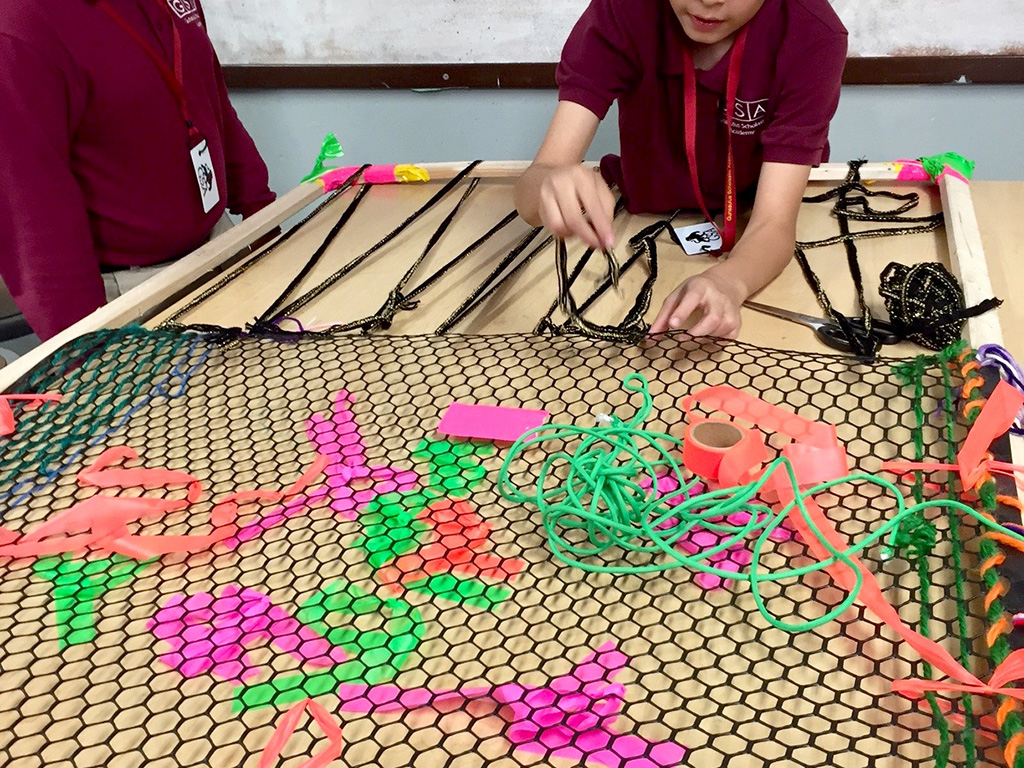
Students are invited to create art together as a collective, based on their own decisions and flow. They will research, select, and create an artwork for a school space together. Student artists will expand their notion of artmaking in a way that is centered on contemporary artist practices and their own experiences by engaging art as technical, conceptual, and relational.
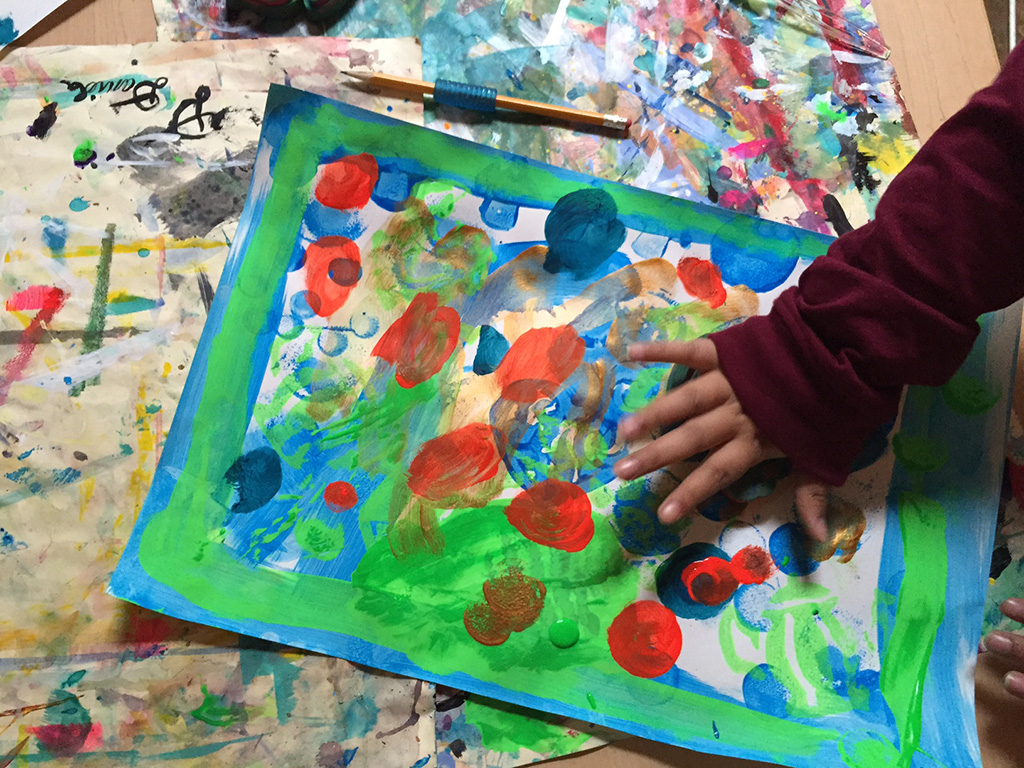
Goals + Objectives
- Art will initiate the collective transformation of existing school space for student engagement.
- The project will create a student-centered process based on contemporary artistic practices and modes of thinking.
- Students will physically explore art as a phenomenon with technical, conceptual, and relational qualities.
Guiding Questions
- Collectivity: What does it mean to make art together? Why might artists create together? How can we demonstrate care towards both our own class and our wider community?
- Space: How do different spaces affect us? How can we transform space through art?
- Transformation: How do artists use transformation to expand our thinking? What school spaces need to be transformed, and why?
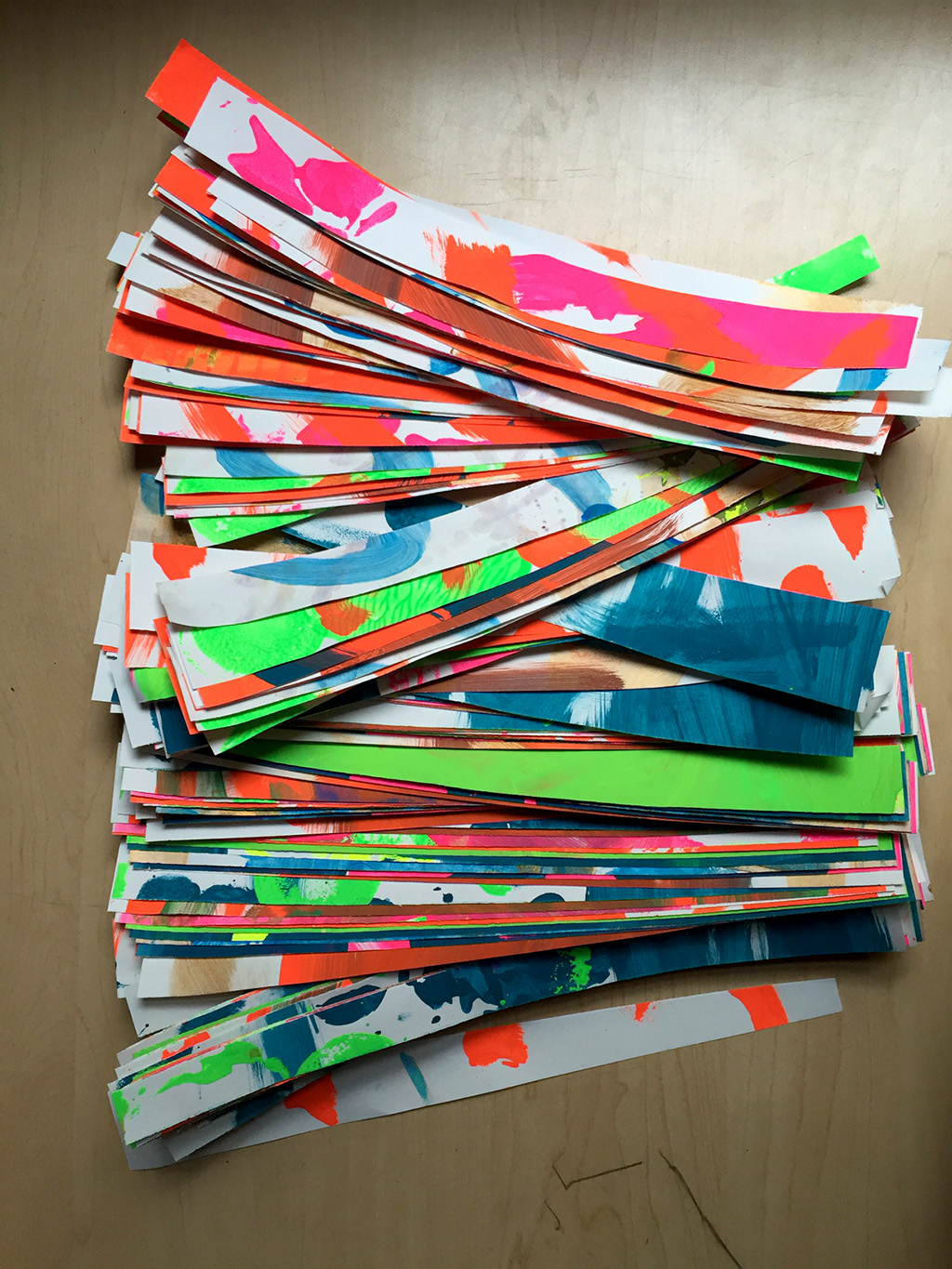
Documentation + Assessment
What did the students do to record their process?
- Students assisted in photo documentation of their process.
- Students created short video clips to compile into video documenting the process and summary of final work.
What did the students do to reflect on/assess their process?
- Students used a think sheet to reflect on their MCA visit in written and visual form.
- Students used a graphic organizer sheet to record thoughts and feelings about different school spaces.
- Students completed a unit reflection and self assessment of their culminating experience.
- Students reflected in videos on what was happening in the process
Timeframe + Learning Activities
Timeframe
Scaffolding: Approximately 30 minutes
Project 1: Making Art Together — Collaborative Painted Paper Weavings
- Days 1 & 2: Students create painted paper in groups together.
- Day 3-4: Students create a woven artwork with the painted paper pieces, contributing to a group collaborative textile when finished.
Project 2: The Individual & The Collective: A Straw Sculpture
- Day 1: Students create triangles from straws and begin to put them together with others.
- Day 2: Students finalize their group sculpture.
Project 3: Transformation of School Space — Student-Directed Artmaking
- Day 1: Students explore the school space and decide on a sculpture location.
- Day 2: Students view artist examples and begin writing and drawing proposals.
- Day 3: Students finish, present, and vote on the proposals.
- Day 4 forward: Students create the project together.
Learning Activities
Scaffolding (to situate the project):
- Discuss Contemporary Art.
- Discuss how art is technical, conceptual, and relational.
- Use a paper tube as a prompt for transformation: What is this? Students go around in a circle and share an idea of what it could be.
Project 1: Making Art Together — Painted Paper Weavings
How can we make art together? How can we transform everyday objects into tools for making textures and patterns?
- Day 1: In table groups, students use the provided texture tools to create painted paper with textures and patterns. Each table receives a bottle of different colored tempera paint and a tray. Students create approximately 2-3 painted papers each with their colors. They are invited to experiment with different ways to use the tools presented on their table.
- Day 2: Painted paper from the previous class is distributed at random to tables. Students have the same prompt as before, but must respond to the patterns on the paper that they are given to create a second layer of texture and design. Students reflect on limitations and creativity: What was it like painting without a paintbrush or with one color?
- Day 3: Students choose one piece of paper from the group stack of painted papers. Students use the paper to create a loom by folding paper in half, measuring the warp every inch, and cutting. The rest of the paper is cut into strips and students weave them into their paper looms.
- Day 4: Students finish their weavings and contribute paper strips to a group loom, which in this case was a chart paper frame warped with yarn, which could take many styles.
Project 2: The Individual & The Collective — A Straw Sculpture
- Day 1: Collectivity. What does it look like to make art together? Students view Native Son by Terry Adkins and discuss how actions affect others and how the piece could be a model for us working together, as well as taking an object and giving it a new form and meaning. Students are given plastic straws and scissors, and follow a guided demo for putting them together to form a triangle. Students continue creating triangles until all the straws are used up. Then they are prompted: How should these triangles go together? Clear masking tape is provided and students organically put their pieces together.
- Day 2: Transformation: How can we transform everyday objects? Students view examples of Tara Donovan installations and put together all straws to create an art piece.
Project 3: Transformation of School Space — Student-Directed Artmaking
- Day 1: School Spaces. Where should we put our sculpture? How do different spaces affect us? How do artists transform public space? What is public space? Students view contemporary artists’ transformations of spaces, and are guided through different parts of their school. They reflect on their feelings and thoughts using the Spaces Thinksheet. Students decide on a location for their Straw Sculpture.
- Day 2: How do artists transform spaces, in museums and beyond? Students are asked to reflect on a space inside or outside of their school that could be transformed, and form groups to write proposals. First, students view additional examples of how artists transform space as inspiration for materials, methods, and concepts for their own ideas. Then, students form groups and fill out the Proposal guide sheet that prompts them about the purpose, effect, and logistics of their project.
- Day 3: How can we transform a space in our school through art? Scaffolding is given in response to students’ needs about planning and presenting their project proposals. They also receive guidance about what is more or less possible to achieve within timeframe, budget, space, etc. Students continue to work in groups to finish their proposals. Then, students present their ideas to the class, answer questions, and cast a vote to choose one project to carry out. Project proposals included murals, dioramas, plant stands, tents, forts, mosaic wall designs, bathroom redesigns, fence weaving, yarn bombing the school, and even installing large Minecraft characters on the fence by the playground.
- Day 4 and beyond: Students create the selected project! I presented the winning proposal—in one class’s case a mosaic—along with a concrete task that could be completed as the first step toward the project. For example, as I didn't have materials or funds for a traditional mosaic, students created painted tag board that we then cut into "mosaic" shapes and arranged on a large, sturdy piece of paper with the proposed design. When I presented the winning proposal, students then spent the first class period painting tag board. For the remaining days of the project, students engage in decision making about revisions and the direction of the project. Materials are presented when needed and any additional technical advice/demos are given. For the most part, students direct the workflow and project while the teacher offers dialogue and prompts when needed. Teacher offers reflection and thoughtful scaffolding at beginning, midway, or end of class sessions as necessary to guide their thinking, making, and communication.
Closure: Students reflect in writing at the end of the unit and self-assess their engagement in the project. Students share in small groups and then gather to share as a group. Documentation is shared from the project and used as a tool to stimulate dialogue.
Community: Students come up with a plan to engage the community with their artwork.
Possible sharing opportunities include an end-of-year art show, student-led presentation and sharing of documentation, bulletin boards, shared image folders, and Vimeo videos.
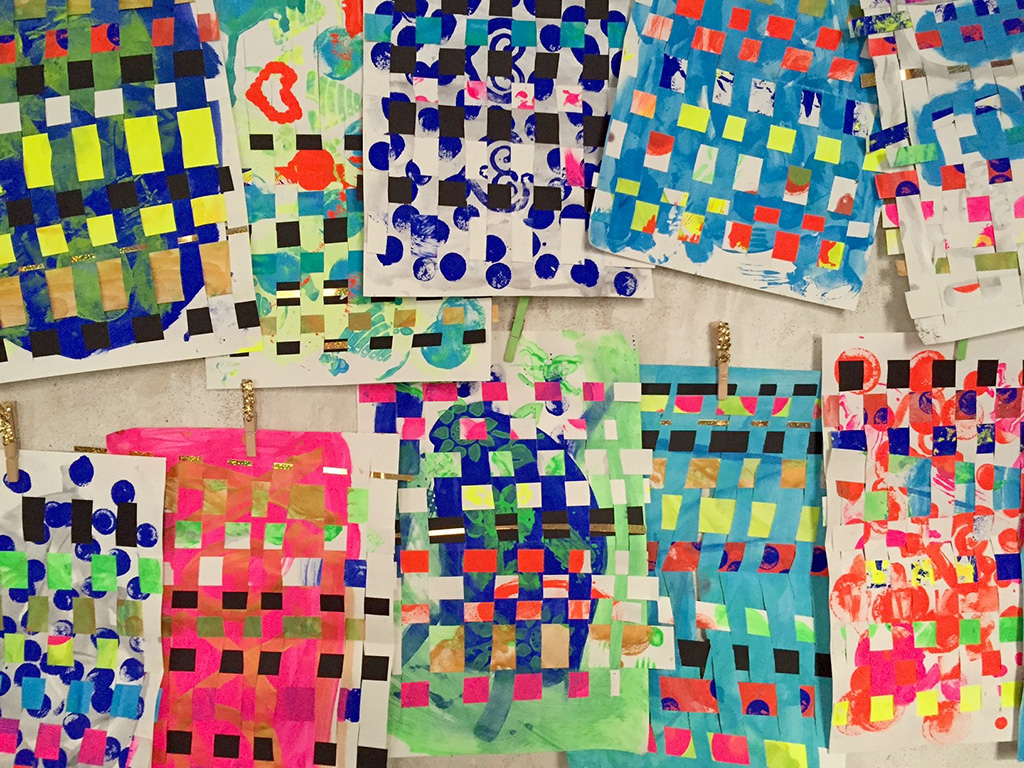
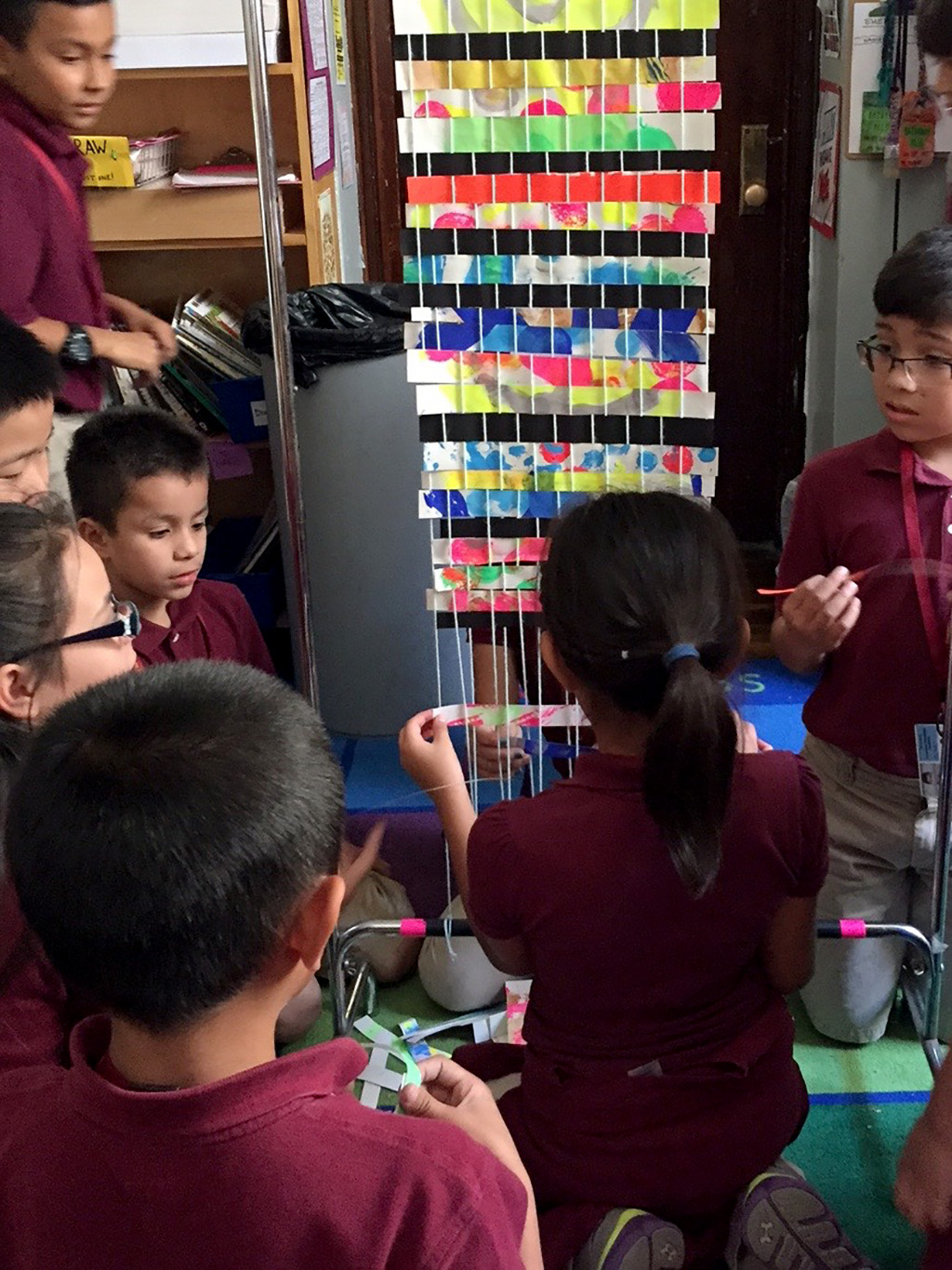
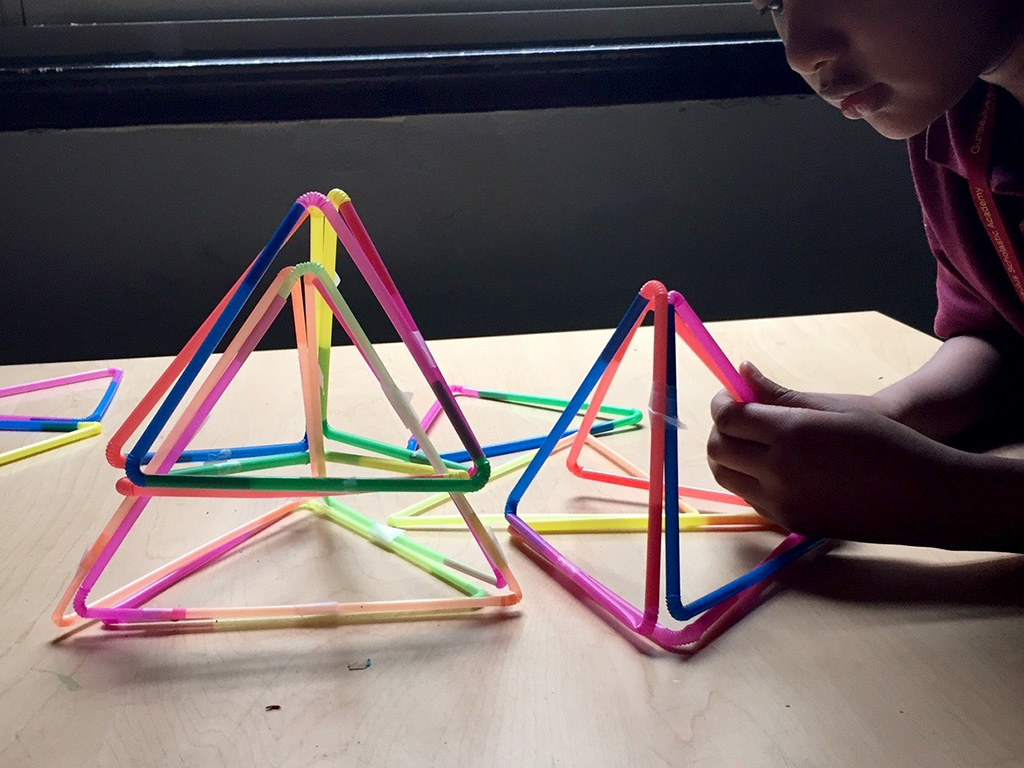
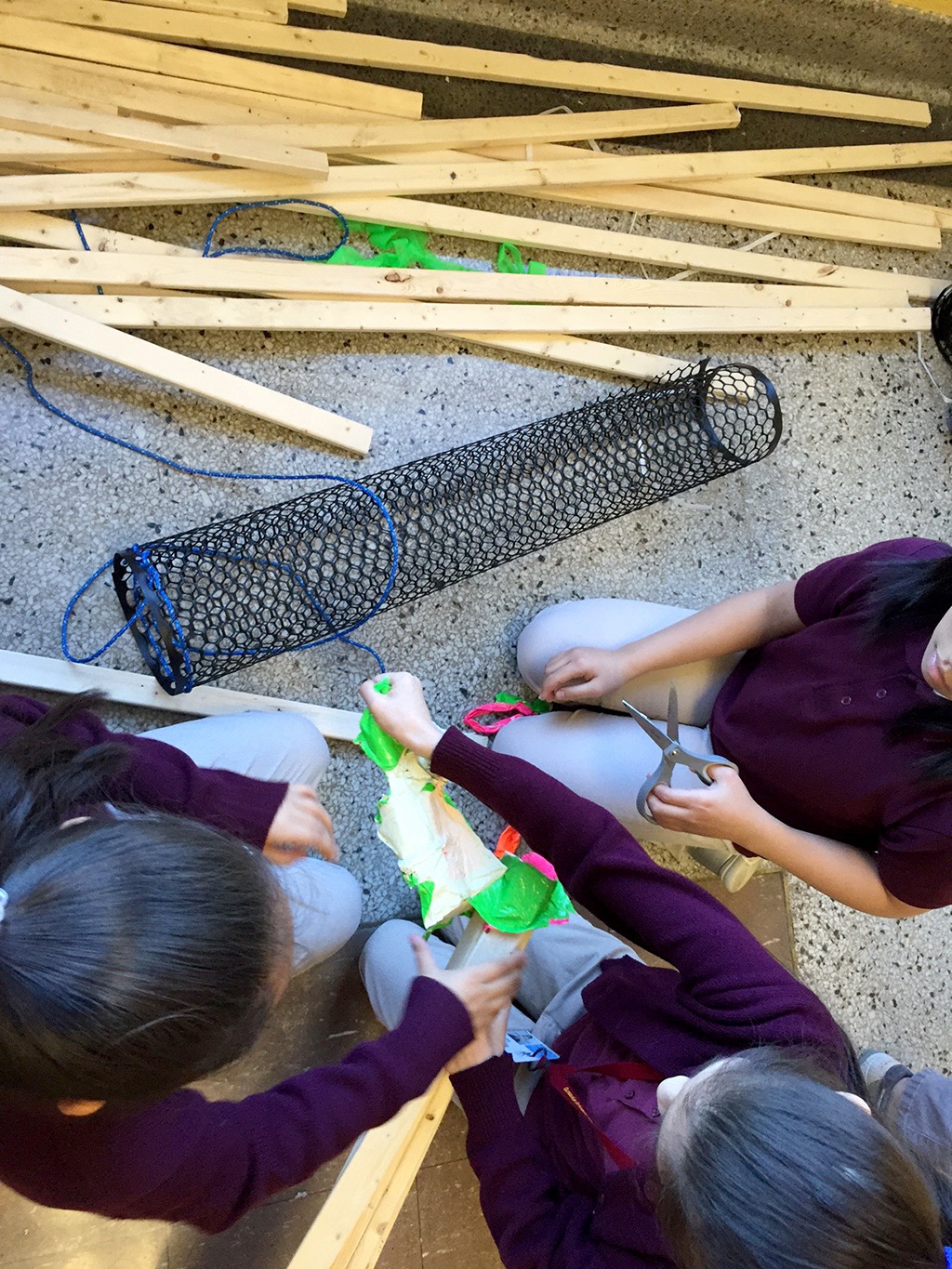
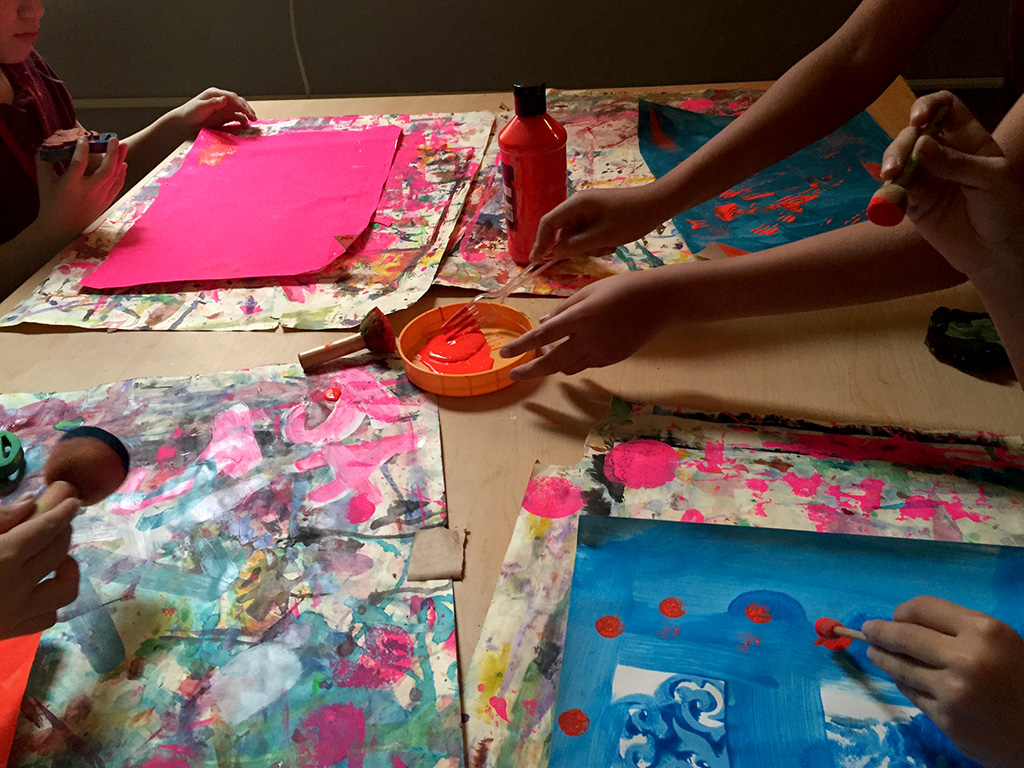
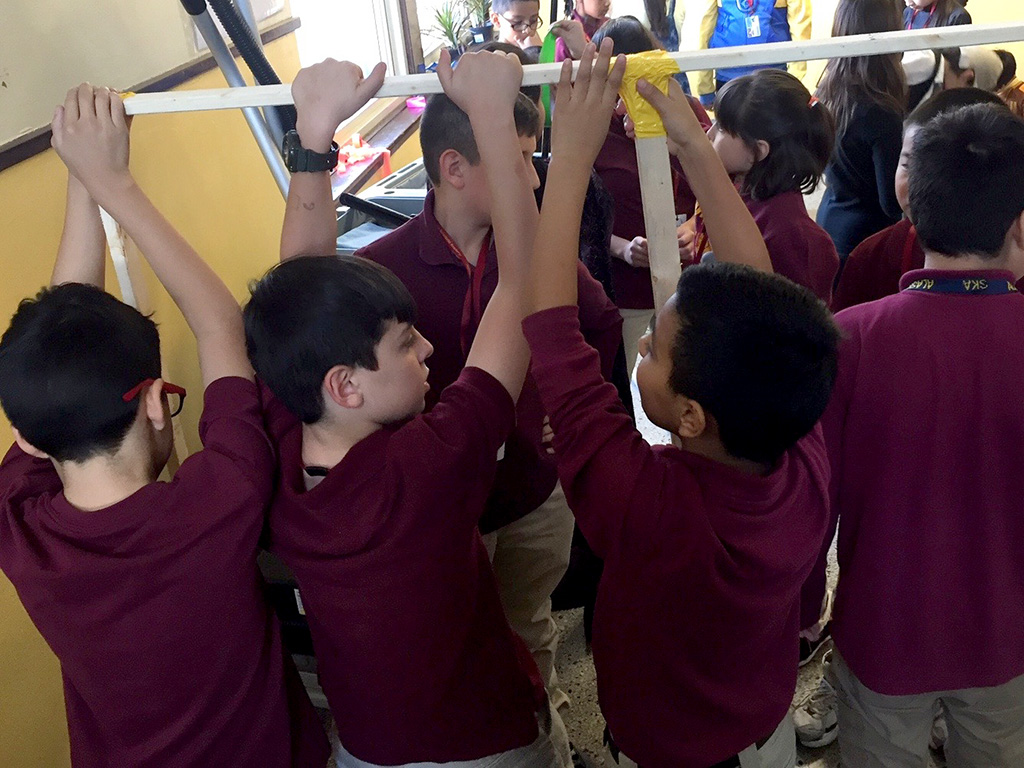
Materials
- Texture tools (forks, sponges, stamps, dabbers, anything non-paintbrush)
- Tempera paint, various colors
- Heavy-weight 12x18 paper
- Scissors
- Plastic drinking straws, approximately 1000 for 30 students
- Clear masking tape, one or more per table of students
Possible student artwork proposal materials (subject to student choice)
- Colored duct tape
- Wood beams
- Plastic chicken coop fencing
- Cord
- Plastic flagging tape
- Houseplants
MCA Connections
- What is a museum space? How and why is it different from a school space? Students explored these questions during and after their visit to the MCA. They reflected on the ways that different rooms of the museum made them feel. Students brought ideas from installation art the MCA to their proposals for the school space. Students’ experiences of the museum artworks and spaces expanded their knowledge of contemporary art and invited their imaginations to transform their school space beyond what they thought was possible.
- The artwork in the Freedom Principle exhibit gave examples for ways to transform everyday materials and spaces (For example, We The People by Nari Ward used shoelaces, and Native Son (Circus) by Terry Adkins used cymbals.)
- The Freedom Principle artists served as examples of collectivity and demonstrated ways of making art together.
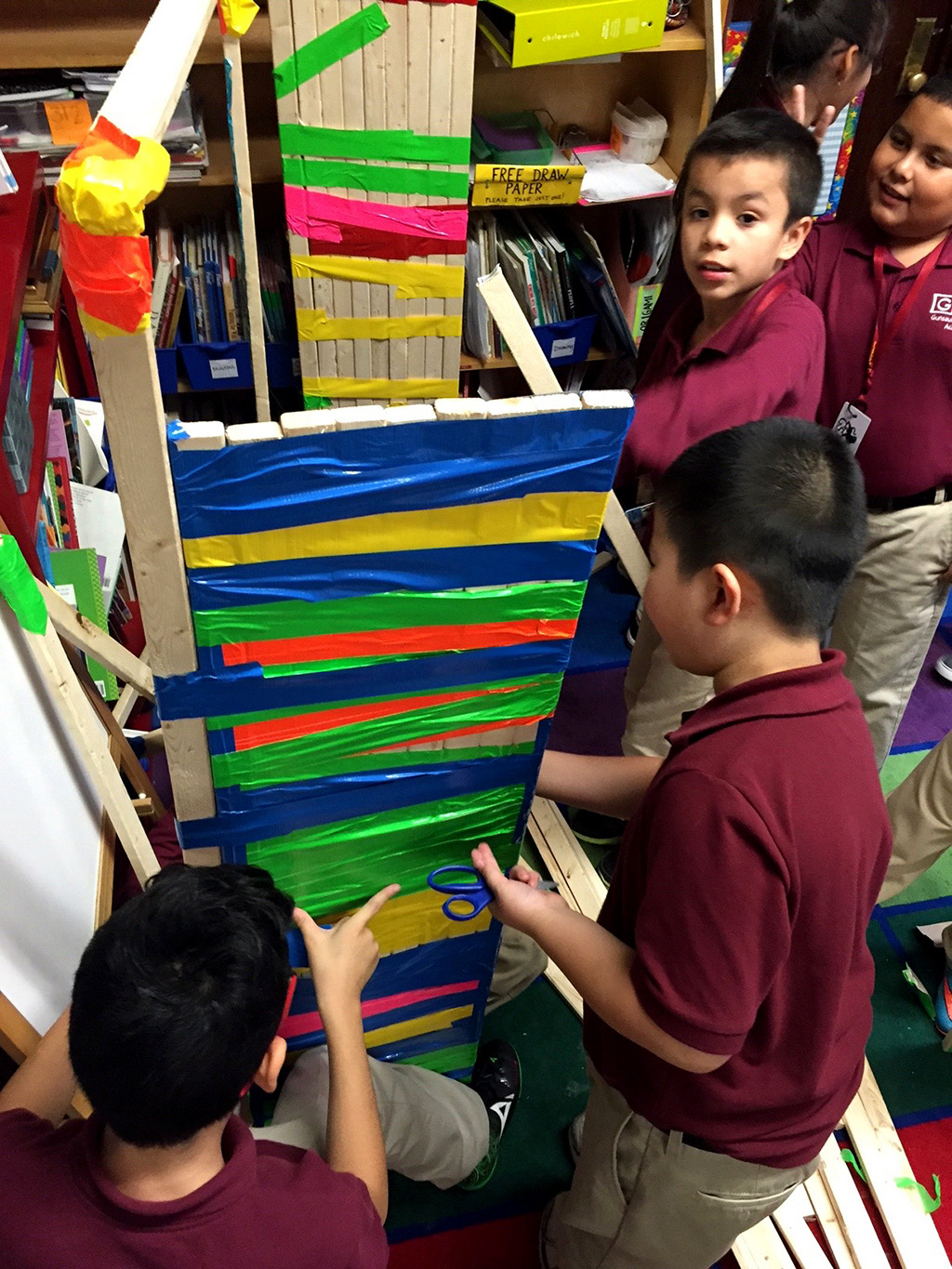
References + Resources
Glenn Ligon, Give us a Poem
Terry Adkins, Native Son
Tara Donovan artworks
Earth Works artists: Olafur Eliasson, Christo & Jean Claude, Andy Goldsworthy
El Anatsui, art21
Ann Hamilton, The Event of a Thread, video by Paul Octavious
Street Artists: Yarn Bombing, Legos, Pothole Art
Kimmy Tolbert Compton
Frank W. Gunsaulus Scholastic Academy
Kimmy Tolbert Compton is an elementary visual arts teacher at Gunsaulus Scholastic Academy in Chicago Public Schools. Her experience is wide ranging, with a focused practice in printmaking, photography, fiber, and mixed media. Her current practice is in handwoven wall hangings. Themes of place, home, transformation, and nature weave in and out of her work. Kimmy attended the School of the Art Institute of Chicago for her Master of Arts in Teaching. Her thesis research investigated place-based education methods as a catalyst for student meaning-making in the art classroom. She believes that art has the power to transform, challenge, and shed insight on the way students see themselves, their city, and their world. Her curriculum aims to engage students in contemporary ways of artmaking and thinking. She is working on finding new ways to welcome play into her art room!
Kimmy reflects on her process:
Our collective project centers on art as a social and relational act. It asks students to think beyond art as a piece of something and think about art as a way of relating to one another. Students were at the center of this project because they researched and reflected on the school space as their own. They decided where their artwork should be in their school. They also wrote proposals in groups and democratically voted. A hallelujah moment during this project was watching students shift from being hesitant about making art without a concrete plan to “learning through experience,” grabbing materials and intuitively trying things out. A student wrapped himself in flagging tape and declared “Look! I am the art”. There were natural obstacles to overcome as well, such as the obstacle of finding an existing school space outside the classroom where we could work. On our second day, I had to move the project into the classroom, but I made it work by assigning different teams, which increased the focus of their approaches. Overall, it was rewarding to see how different pieces of the project fit together and how naturally students can problem-solve together when I release control.